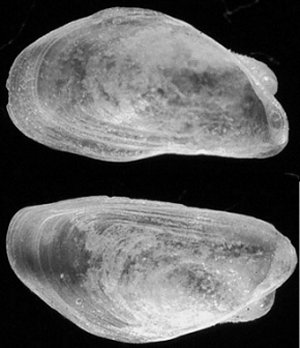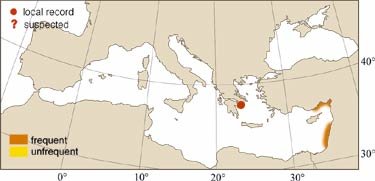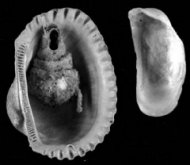
|
Relevant Synonyms
Misidentification
|
|
| photo: P. Pravlis / Coll. L. and R. Enzenross |
|
SHORT
DESCRIPTION
color :
white.
common size :
5 mm to 12 mm in length, tube 12 x 6.5 mm. |
DISTINGUISHING CHARACTERISTICS
BIOLOGY / ECOLOGY
habitat : very common, mostly attached to dead shells, enclosed in calcareous capsules (see detailed photo below), with a preference to bivalves lying on the surface of sands and muds; in deep continental shelf waters (9-91 m depth).
|
|
1st
Mediterranean record
|

|
|
DISTRIBUTION
|
ESTABLISHMENT SUCCESS
speculated reasons for success :
|
|
|
MODE OF
INTRODUCTION |
IMPORTANCE TO
HUMANS |
|
KEY
REFERENCES
|
|
|
